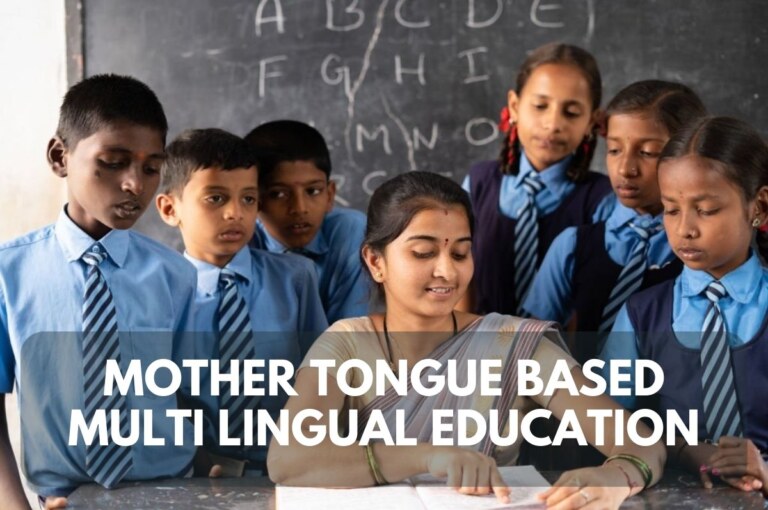The promotion of mother tongue-based multilingual education in the nation’s schools is a major focus of the Indian government’s newly announced National Education Policy (NEP) 2020. This is a positive development because studies have shown that when children are taught in their mother tongue, they learn more effectively.
The NEP’s emphasis on mother tongue-based multilingual education will help children learn more effectively, which is one of its main advantages. When material is delivered to children in their mother tongue, they are more likely to comprehend and remember it because they have a deeper awareness of the language and culture. Schools can help to enhance learning outcomes and decrease the achievement gap between various linguistic groups by teaching students in their mother tongues.
The NEP’s emphasis on mother tongue-based multilingual education has the added benefit of preserving India’s linguistic diversity. The development of mother tongue-based education would aid in the preservation of India’s numerous languages and the cultural traditions they represent.
However, there are certain difficulties in putting the NEP’s emphasis on mother tongue-based multilingual education into practise. One issue is the scarcity of multilingual teachers who are trained. The implementation of mother tongue-based education is challenging in India since many schools lack teachers who are proficient in the local vernacular.
The absence of materials and resources in numerous languages presents another difficulty. It might be challenging for teachers to properly integrate mother tongue-based education because many schools lack access to teaching tools and materials in the native tongue.
The lack of support for teachers presents another difficulty in implementing the NEP’s emphasis on mother tongue-based multilingual education. It’s possible that many teachers lack native language proficiency or lack training in how to instruct in the home tongue. They may require assistance and professional development to be able to implement mother tongue-based education effectively as a result.
In order to successfully implement mother tongue-based education, the government and educational institutions must collaborate to ensure that there are sufficient numbers of teachers who are proficient in all languages. Teachers also require assistance and professional development to do this. This could entail setting up networks of support for teachers, creating programmes for teacher training, and creating educational resources and instructional materials in several languages.
Involving the local community in the process is another strategy for overcoming the difficulties mother tongue-based education faces in India. Schools can make sure that the needs and priorities of the community are taken into account when implementing mother tongue-based education by collaborating with local community leaders and parents. This can increase support for the initiative and guarantee its long-term success.
Overall, the NEP’s emphasis on multilingual education based on mother tongues is a positive step for India’s educational future. The NEP will contribute to bettering student learning results and preserving linguistic variety in the nation by encouraging the use of mother tongues in the classroom. To overcome the obstacles and guarantee that the NEP’s objectives for mother tongue-based education are achieved, it is crucial for the government and educational institutions to collaborate.






Leave a comment